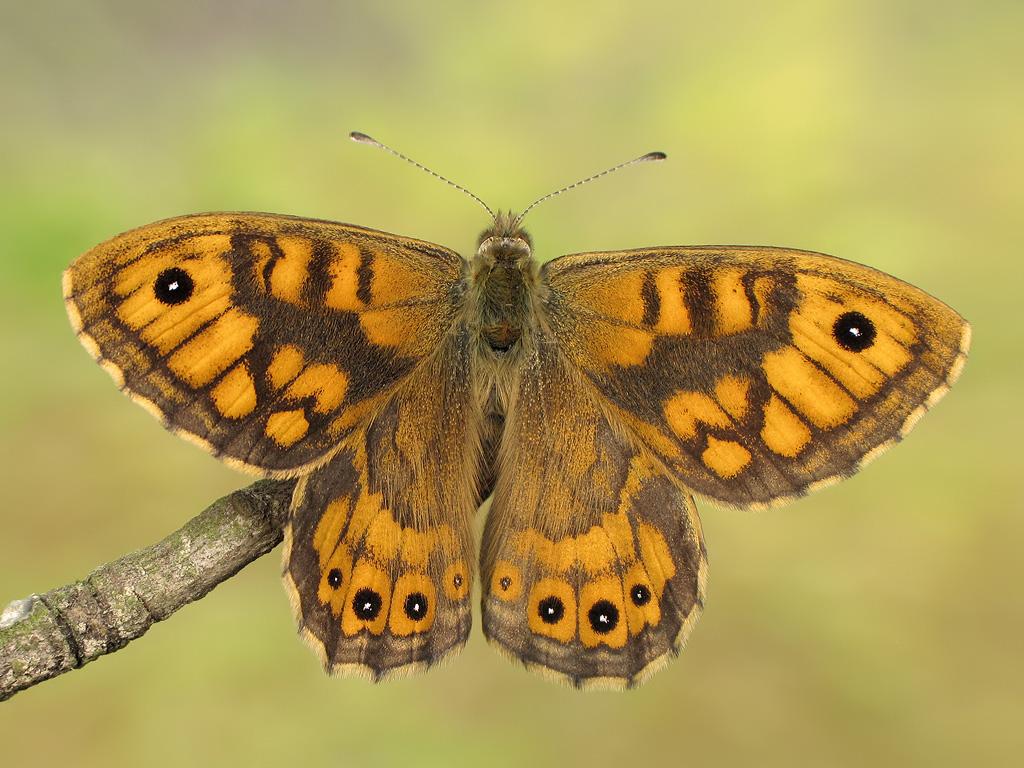Description
it is found around the coast as far north as southern scotland. inland, it is more widespread in northern england and southern scotland. it is a similar size and colour to the gatekeeper, but the wall is much more heavily patterned and sometimes confused with small fritillary butterflies. the wall is aptly named after its habit of basking on walls, rocks, and stony places. the delicately patterned light brown undersides provide good camouflage against a stony or sandy surface. in hot weather, males patrol fast and low over the ground, seeking out females. in cooler weather, they will bask in sunny spots and fly up to intercept females, or to drive off other males. the wall is widely distributed but rarely occurs in large numbers. over the last decade, it has declined substantially in many inland areas of central england and northern ireland.
Habitat
The Wall favours short, open grassland, where turf is broken or stony. It is also found on dunes and other coastal habitats, as well as disused quarries, derelict land, farm tracks, railway embankments and cuttings, gardens and field edges.
Countries
Countries: England, Scotland, Wales and Ireland
Wing span range
0mm













